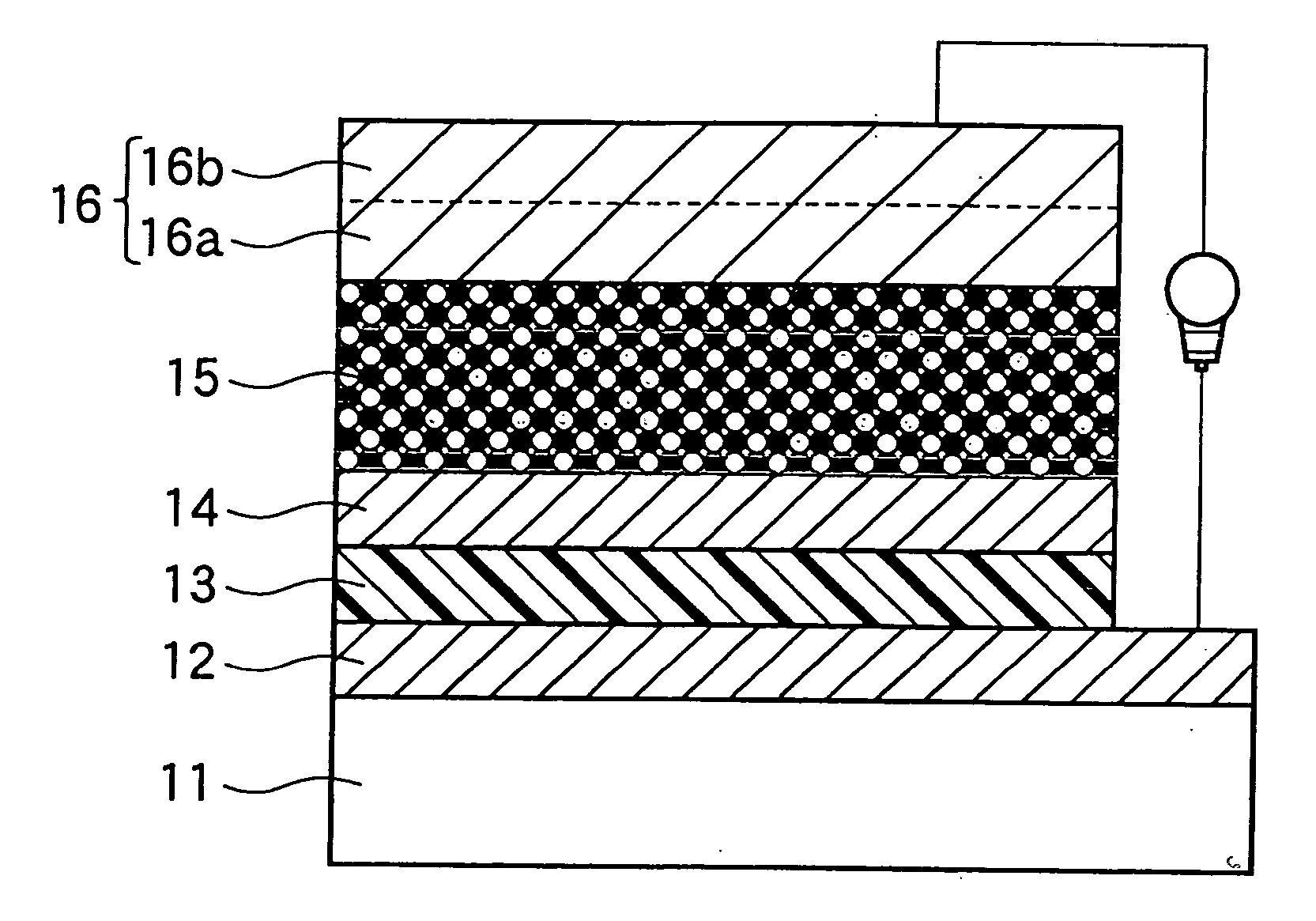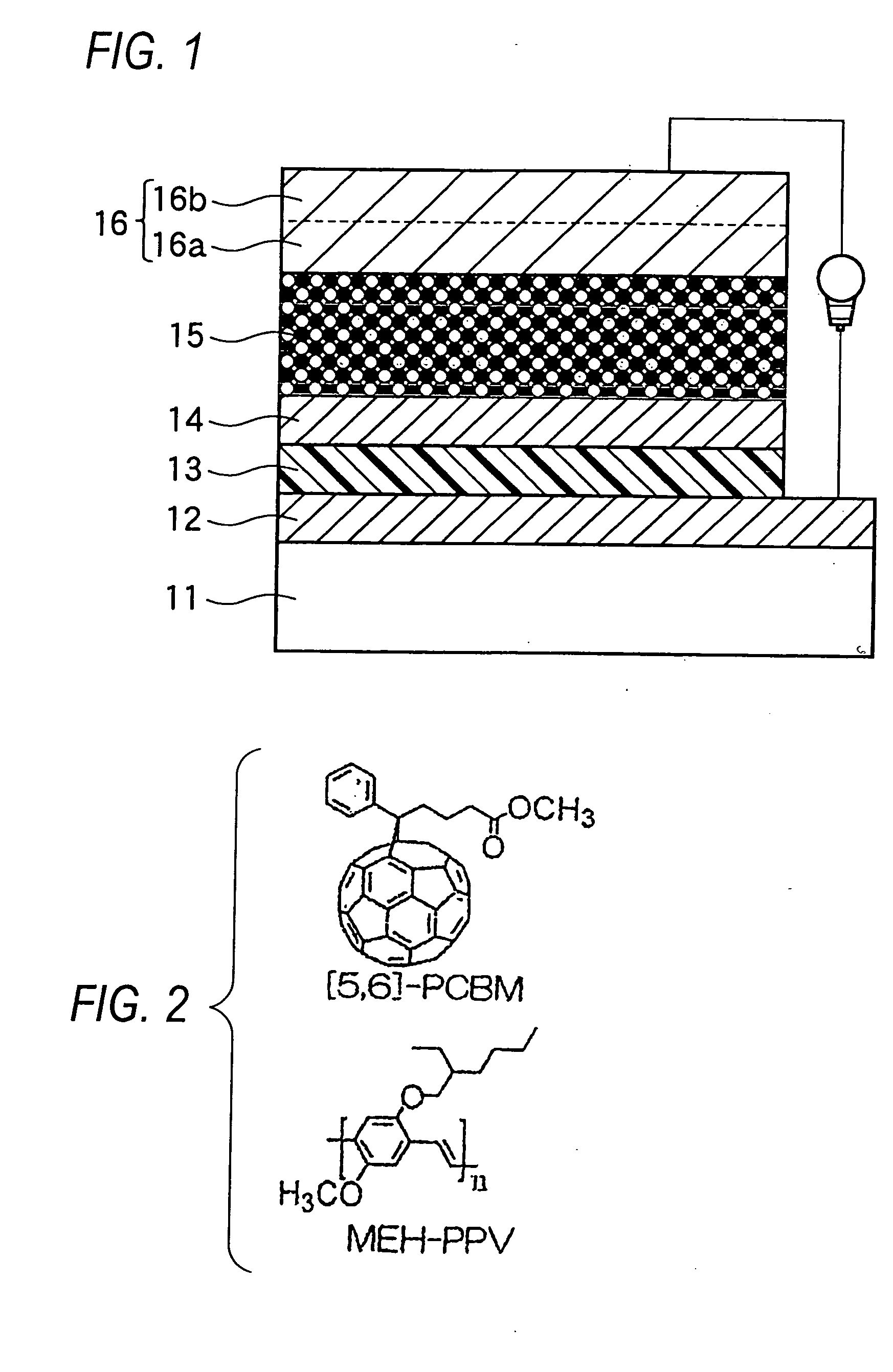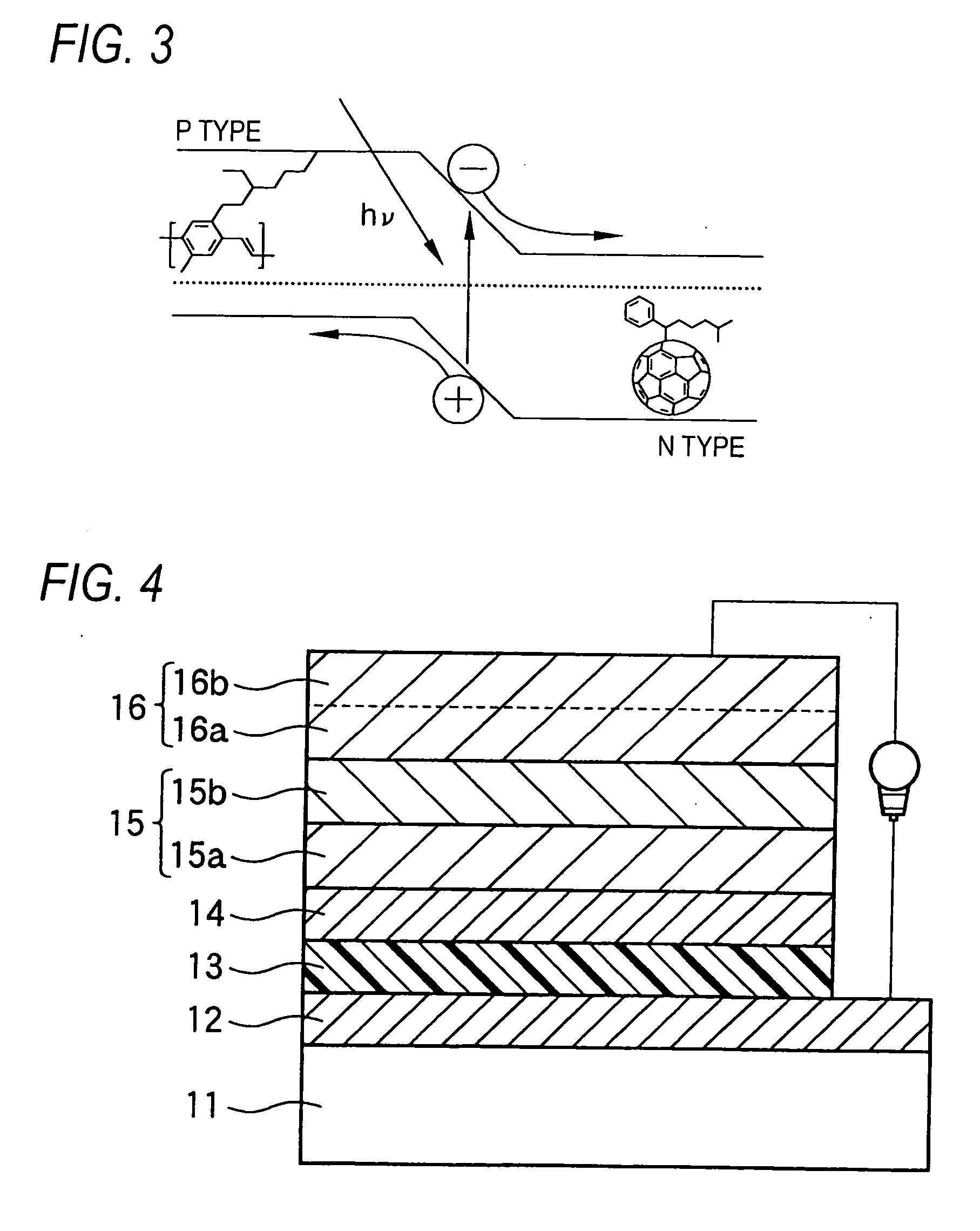Organic photoelectric conversion element and method of producing the same, organic photodiode and image sensor using the same, organic diode and method of producing the same
a conversion element and organic technology, applied in the field of methods, can solve the problems of short product life, difficulty in cost reduction, and currently available organic photoelectric conversion elements cannot meet the life requirement of any type of application, and achieve the effects of reducing the dark current of an organic photodiode, high sensitivity, and high performance information read-ou
- Summary
- Abstract
- Description
- Claims
- Application Information
AI Technical Summary
Benefits of technology
Problems solved by technology
Method used
Image
Examples
embodiment 1
[0098] One embodiment of the invention is described in detail with reference to the drawings. The present embodiment is characterized by that a buffer layer 14 comprising an inorganic film made of molybdenum oxide (MoO3) is arranged between an organic photoelectric conversion layer 15 and a positive electrode 12, as shown in FIG. 1.
[0099] Namely, as shown in FIG. 1, the buffer layer 14 comprising an inorganic matter is inserted between the charge transport layer 13 and the organic photoelectric conversion layer 15 for the purpose of preventing the diffusion of the materials constituting the charge transport layer 13, particularly ionic materials into the organic photoelectric conversion layer 15. Thus, on a substrate 11, a positive electrode 12, a charge transport layer 13, a buffer layer 14, an organic photoelectric conversion layer 15 and a negative electrode 16 are stacked in this order.
[0100] With this configuration, an organic photoelectric conversion element showing high eff...
example 1
[0125] Next, an example is described. First of all, on a glass substrate 11, an ITO film 12 with 150 nm thickness was formed by means of sputtering. Thereafter, on this ITO film a resist film with 5 μm thickness was provided by spin-coating a resist material (OFPR-800 of Tokyo Ohka Kogyo Co., Ltd.). Then, via masking, exposure and development, the resist film was patterned into the shape of a positive electrode 12.
[0126] Then, after immersed in an 18 N aqueous hydrochloric acid kept at 60° C. to etch the ITO film 12 at the portion where no resist film is present, this glass substrate was washed with water. Finally, by removing the resist film, a positive electrode 12 consisting of the ITO film in the pre-determined pattern was obtained.
[0127] Then, the glass substrate 11 was subjected to ultrasonic rinsing with a detergent (Semico-clean, a product of Furuuchi Chemical Corp.) for 5 min, ultrasonic rinsing with pure water for 10 min, ultrasonic rinsing for 5 min with a solution obta...
embodiment 2
[0136] Next, Embodiment 2 for practicing the invention is described. While, in the foregoing Embodiment 1, the organic photoelectric conversion layer consisted of a mono-layer containing an electron donating material and an electron accepting material, the present embodiment adopts a dual-layer structure comprising an electron accepting layer 15 a and an electron donating layer 15b as shown in FIG. 4 wherein a pn junction is formed at the interface of the two layers. The other portions are structurally the same as those of the organic photoelectric conversion element set forth in the aforementioned Embodiment 1.
[0137] In the organic photoelectric conversion element of such a structure, the transfer of carriers is limited to occur only at the pn junction. Therefore, the excitons generated in the inside of the electron donating layer far from the junction cannot deliver electrons to the electron accepting material. Hence, such a phenomenon may exert an adverse effect on the PEDOT:PSS...
PUM
| Property | Measurement | Unit |
|---|---|---|
| thickness | aaaaa | aaaaa |
| thickness | aaaaa | aaaaa |
| thickness | aaaaa | aaaaa |
Abstract
Description
Claims
Application Information
 Login to View More
Login to View More - R&D
- Intellectual Property
- Life Sciences
- Materials
- Tech Scout
- Unparalleled Data Quality
- Higher Quality Content
- 60% Fewer Hallucinations
Browse by: Latest US Patents, China's latest patents, Technical Efficacy Thesaurus, Application Domain, Technology Topic, Popular Technical Reports.
© 2025 PatSnap. All rights reserved.Legal|Privacy policy|Modern Slavery Act Transparency Statement|Sitemap|About US| Contact US: help@patsnap.com



